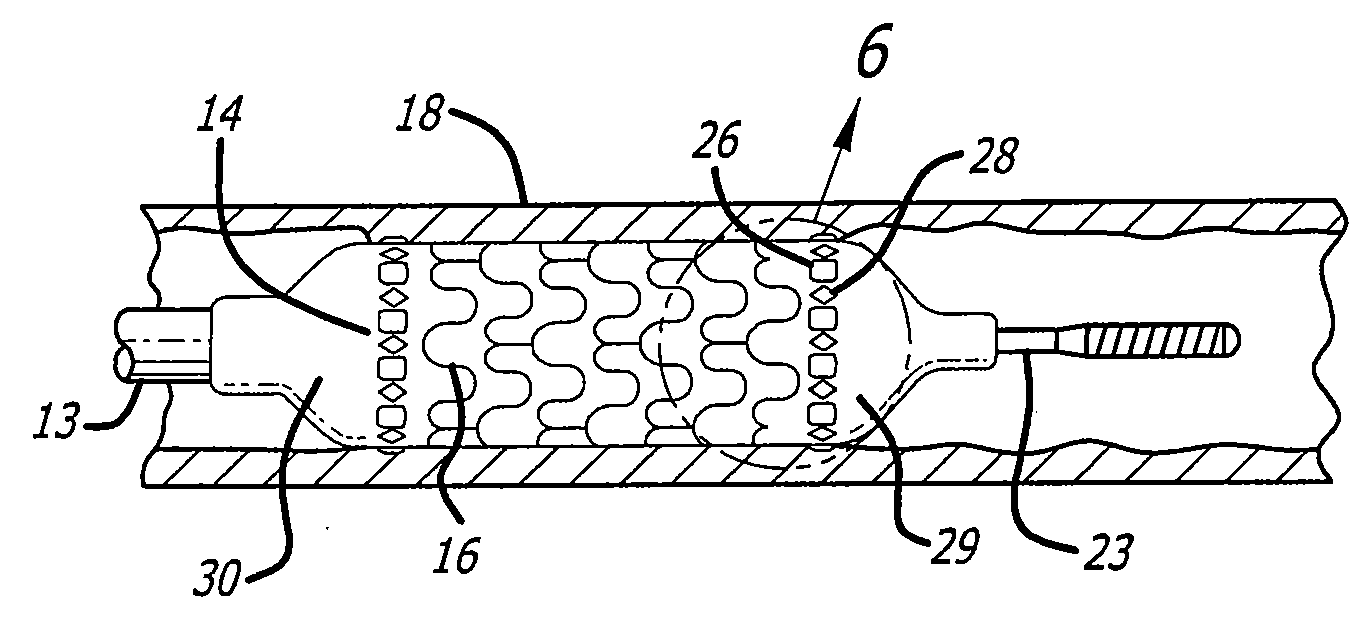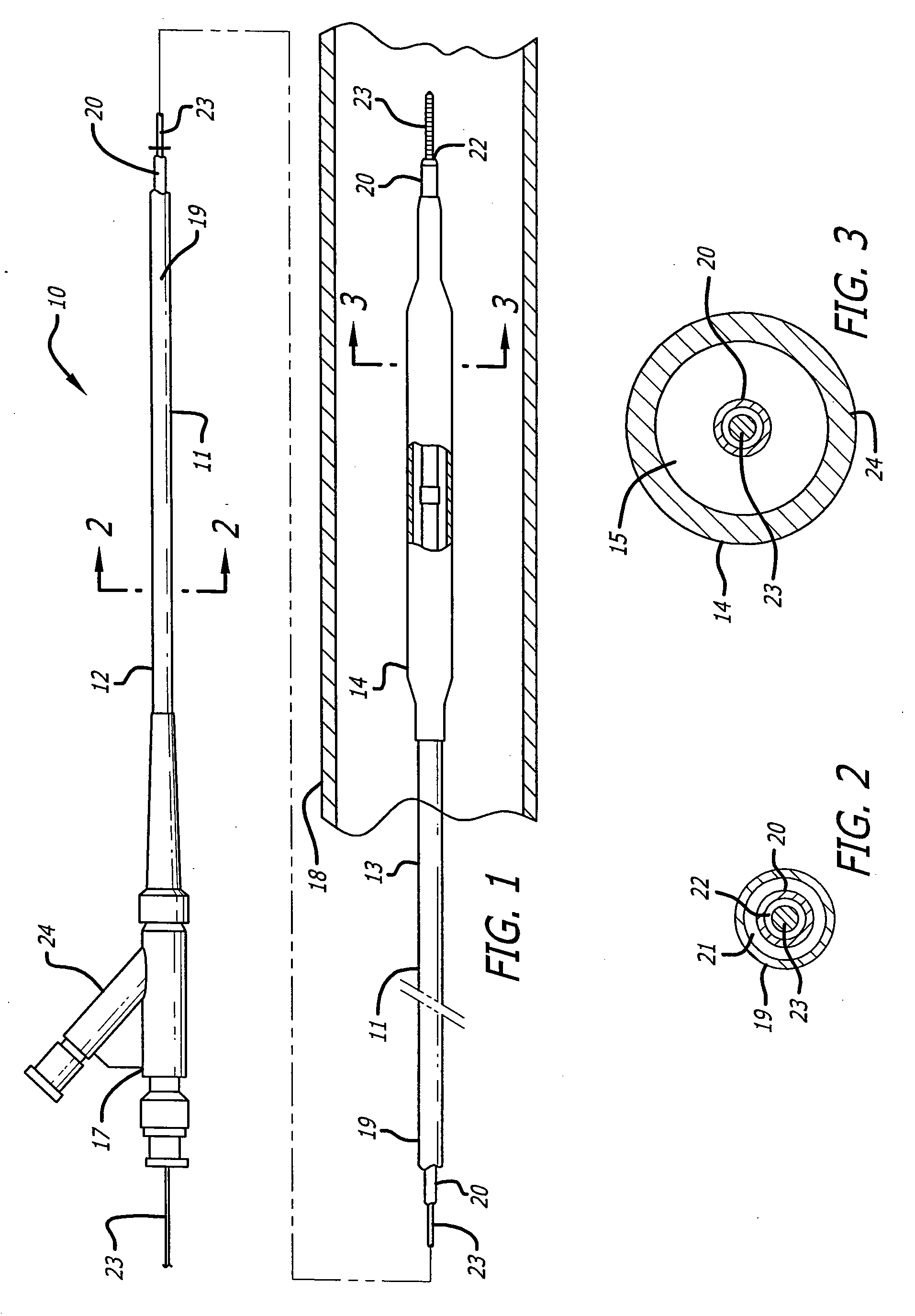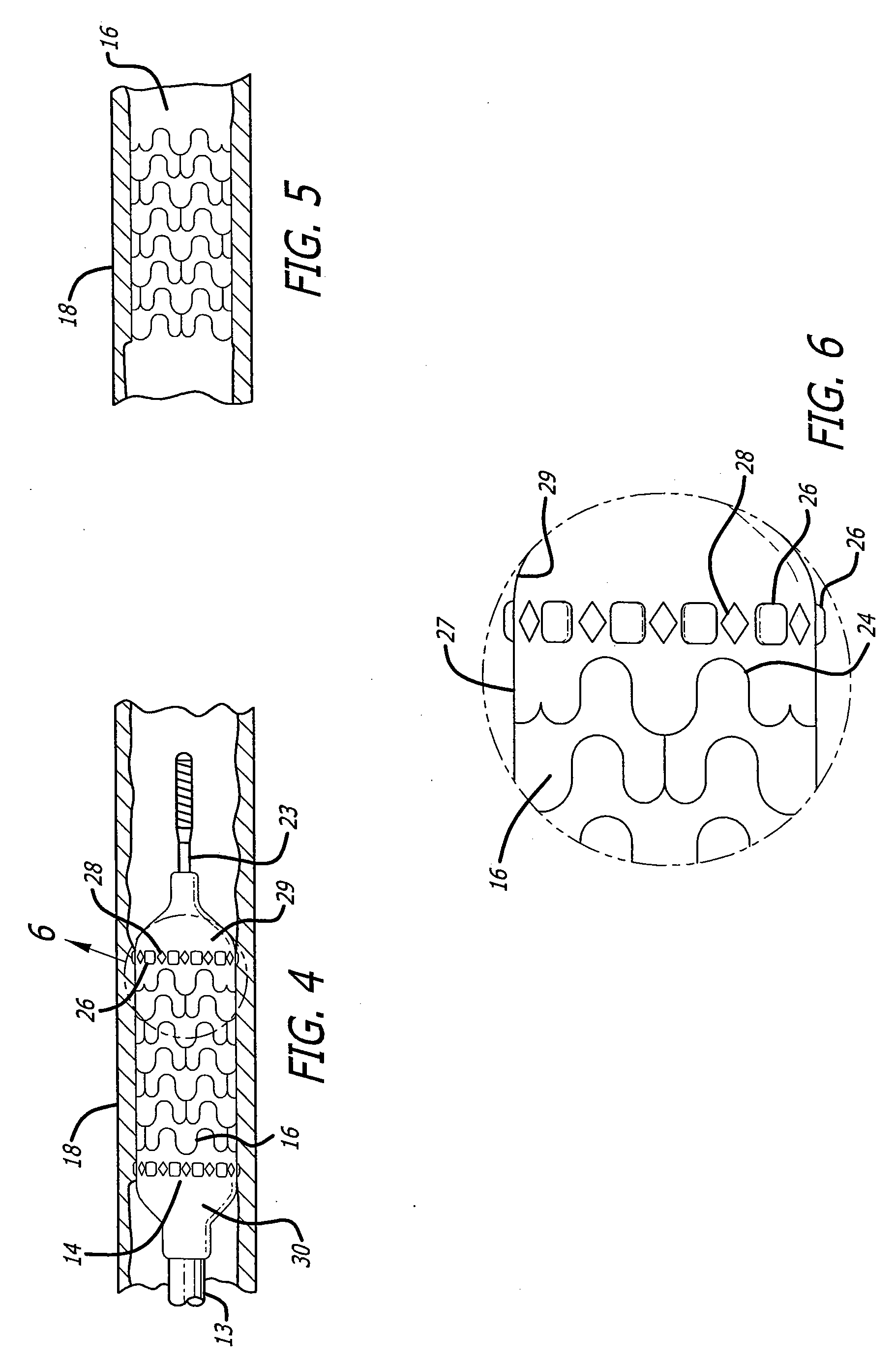Easy marker placement balloon mold
a marker and mold technology, applied in the field of intravascular balloon catheters, can solve the problem that the manufacturing process does not readily lend itself to precise determination, and achieve the effect of quick and easy positioning and resistance to stent slippag
- Summary
- Abstract
- Description
- Claims
- Application Information
AI Technical Summary
Benefits of technology
Problems solved by technology
Method used
Image
Examples
Embodiment Construction
[0015]FIG. 1 shows a balloon catheter that can be used to illustrate the features of the invention. The catheter 10 of the invention generally comprises an elongated catheter shaft 11 having a proximal section 12, a distal section 13, an inflatable balloon 14 on the distal section 13 of the catheter shaft 11, and an adapter 17 mounted on the proximal section 12 of shaft 11. In FIG. 1, the catheter 10 is illustrated within a greatly enlarged view of a patient's body lumen 18, prior to expansion of the balloon 14, adjacent the tissue to be injected with therapeutic agents.
[0016]In the embodiment illustrated in FIG. 1, the catheter shaft 11 has an outer tubular member 19 and an inner tubular member 20 disposed within the outer tubular member and defining, with the outer tubular member, inflation lumen 21. Inflation lumen 21 is in fluid communication with the interior chamber 15 of the inflatable balloon 14. The inner tubular member 20 has an inner lumen 22 extending therein which is co...
PUM
| Property | Measurement | Unit |
|---|---|---|
| constant radius | aaaaa | aaaaa |
| shape | aaaaa | aaaaa |
| diameter | aaaaa | aaaaa |
Abstract
Description
Claims
Application Information
 Login to View More
Login to View More - R&D
- Intellectual Property
- Life Sciences
- Materials
- Tech Scout
- Unparalleled Data Quality
- Higher Quality Content
- 60% Fewer Hallucinations
Browse by: Latest US Patents, China's latest patents, Technical Efficacy Thesaurus, Application Domain, Technology Topic, Popular Technical Reports.
© 2025 PatSnap. All rights reserved.Legal|Privacy policy|Modern Slavery Act Transparency Statement|Sitemap|About US| Contact US: help@patsnap.com



